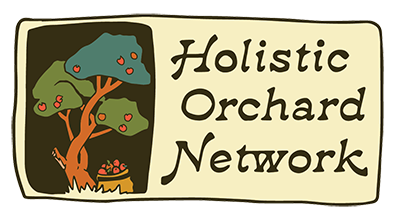-
April 7, 2023 at 5:19 pm #231
Archive Posts
KeymasterIs this Anthracnose?
Posted by Karen Brindle
Forum List Message List New Topic
Karen Brindle
Is this Anthracnose?
March 23, 2019 08:53AM Registered: 9 years ago
Posts: 103
Hi, I’ve discovered some alarming damage to some of our trees. It’s on apple, plum and asian pears. It seems to start as a long crack, then the bark splits and peels away without the usual stringy look to Anthracnose as I know it. I’m not sure this is “fungal” so pardon if I’ve posted in the wrong area. I do have a photo uploaded of an affected branch, about 1.5″ diameter that I cut off the tree after taking the picture. Wish I could get photos to work here.–no photo available–
Can anyone point me in the right direction on identifying the pathogen causing this? Thank you so much!!!!
Vista Ridge Orchard
Zone 8a in Washington
235 Cider and heritage apple trees, 72 varieties,
Reply Quote
Leslie Price
Re: Is this Anthracnose?
April 28, 2020 10:20PM Registered: 4 years ago
Posts: 20
That’s not Anthracnose Karen. Not quite sure what it would be. Is it always on the same side of the trees? Like maybe contrasting cold / sun damage?Leslie Price
Jones Creek Farms
skagitvalleyfruit.com
Lyman, WA
zone 8a
Reply Quote
Karen Brindle
Re: Is this Anthracnose?
April 28, 2020 11:03PM Registered: 9 years ago
Posts: 103
Thanks Leslie, no it can be on any side. I cut that whole branch out and the problem did not reoccur on that Boskoop. I’m not seeing it this year. Another mystery that the trees must have solved by themselves?Vista Ridge Orchard
Zone 8a in Washington
235 Cider and heritage apple trees, 72 varieties,APRIL 6, 2023 AT 12:59 AM
EDITMOVESPLITTRASHSPAMUNAPPROVEREPLYARCHIVE POSTS
KEYMASTER
(69.50.62.71)
Dealing with Anthracnose in the Pacific Northwest
Posted by Leslie Price
Forum List Message List New Topic
Leslie Price
Dealing with Anthracnose in the Pacific Northwest
April 28, 2020 10:11PM Registered: 4 years ago
Posts: 20
In my organic blocks, for Anthracnose, ive been using the old standby Bordeaux mix. Usually 3 apps from fall to spring at 8-8-100 to 10-10-100 depending on the circumstances. Anthracnose pressure is not as high in my organic blocks mostly due to the varieties being grown there. The 2 identified Anthracnose species of major economic concern for this area favor 1 – Cox Orange Pippin type varieties and 2 – Golden Delicious type varieties.Now my U pick block, on the other hand, with over 200 varieties of consumer popular old world varieties, is loaded with highly susceptible Anthracnose magnets. Since there has been NO research done of any real value on Anthracnose, there isn’t even life cycles available, I have been left with fighting this with all kinds of trial and error chemical and mechanical measures. The pressure has been increasing since the early 2000’s with sporadic devastating blooms occurring every few years depending on the weather. I use the Bordeaux mix in the U pic block also as I feel it is the only published recommended tool I have. The problem is that Bordeaux is only a preventative measure at best. It dose nothing to kill active spores during the 2 release periods in the fall and spring….. or maybe its all winter in our climate?
Last season I took the drastic measure of spraying Oxidate 5.0 from delayed dormant all through to leaf drop. I mostly sprayed at the maximum allowable rate. Even though Anthracnose isn’t listed for apples on the label it is listed for other crops on the label and apples are on the label for scab and other fungi. One has to think a little outside the box when dealing with something like this. So on 4 acres, aprox 2200 trees, I made 18 applications of Oxidate at maximum rate. By the end of the year the difference was notable. The trees looked stressed, leaves a little off colored. Probably could have used a reduced rate. Also was a most notable reduction in new infections to new trees…. like almost none.
The downside of this approach, of coarse, is that it sterilizes your orchard. So this year I have fine tuned the rate of Oxide downward and have added a follow up app of beneficial fungi (Regalia) after each spray.
So really, don’t follow me. I’m just fumbling around on my own in absence of leadership on the subject at this point (sort of like our country right now).
Jones Creek Farms
skagitvalleyfruit.com
Lyman, WA
zone 8aEdited 2 time(s). Last edit at 04/29/2020 01:34AM by Michael Phillips.
Reply Quote
Karen Brindle
Re: Dealing with Anthracnose on the Pacific Northwest
April 28, 2020 10:58PM Registered: 9 years ago
Posts: 103
Thank you for posting this topic! Several years ago we received B-118 rootstock that was obviously infected with lesions. Not a great way to start an orchard, we burned them. . Right or wrong, I have been coating the lesions or even suspected ones with pure neem in winter when I prune. My unscientific theory is that the neem will disrupt the spores from spreading. So far, it seems to be stopping the lesions from growing as well but not significant healing. And, I’m not seeing new outbreaks on the trees I’ve done this to. It does discolor the bark. I have also tried using spot spray bottle of Cueva but it does not stay on the wood as long as the neem does. I wish we knew the lifecycle timing better to target this nasty when it is most vulnerable! Yes, fumbling indeed.Vista Ridge Orchard
Zone 8a in Washington
235 Cider and heritage apple trees, 72 varieties,
You must be logged in to reply to this topic.
